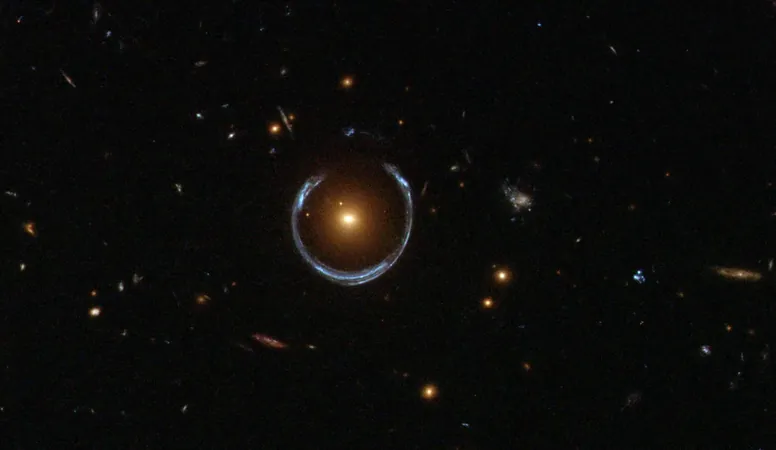
Unraveling the Secrets of Twisted Trilayer Graphene: The Battle of Light and Heavy Electrons!
2025-07-02
Author: Emily
Groundbreaking Research on Twisted Trilayer Graphene
In a remarkable breakthrough, researchers from Harvard, MIT, and the National Institute for Material Science in Japan have delved deep into the enigmatic world of magic-angle twisted trilayer graphene (MATTG). This unique material, known for its ability to host various quantum phenomena, serves as a playground for studying the fascinating interactions between light and heavy electrons.
What Makes Light and Heavy Electrons So Special?
In systems with multiple energy bands, the dynamics of electrons with different effective masses can lead to incredible phenomena. MATTG is intriguing because it houses both heavy "bound" electrons and light "weakly bound, mobile" electrons, challenging everything we thought we knew about electron behavior.
A New Perspective on Quantum States
According to Andrew T. Pierce, a lead author of the study, their research goes beyond asking what the overall ground state is. The real question is understanding how these diverse electron states collaborate to create novel quantum phenomena. Until now, light electrons were often overlooked as unimportant bystanders. However, with fresh insights, their role in the system is being reevaluated.
A Closer Look with Cutting-Edge Technology
Utilizing advanced scanning single-electron transistor (SET) microscopy, the team discovered tiny "puddles" in MATTG where electrons are trapped—especially when the material enters an insulating state. Astonishingly, while heavy electrons appear to create insulating conditions, the light electrons remain surprisingly mobile, hinting at their crucial involvement in forming unique quantum states, including superconductivity.
The Mystery Unfolds: Interaction Between Electrons
As Pierce explained, heavy electrons might be acting like a facade of an insulating layer, whereas the light electrons are freely moving beneath. This revelation opens the door to the intriguing possibility that light electrons could mediate vital interactions between heavy electrons, fundamentally altering our understanding of electronic behavior in materials.
Future Discoveries Await!
This research not only sheds light on the complex relationship between light and heavy electrons in MATTG but also highlights the plethora of unexplored potential within two-dimensional materials. By tuning the balance of these electron types, we could be on the brink of groundbreaking discoveries in quantum physics. Pierce advocates for continued exploration of this fascinating realm, asserting that deciphering the roles of coexisting light and heavy electrons may lead to stunning new developments in the field.









 Brasil (PT)
Brasil (PT)
 Canada (EN)
Canada (EN)
 Chile (ES)
Chile (ES)
 Česko (CS)
Česko (CS)
 대한민국 (KO)
대한민국 (KO)
 España (ES)
España (ES)
 France (FR)
France (FR)
 Hong Kong (EN)
Hong Kong (EN)
 Italia (IT)
Italia (IT)
 日本 (JA)
日本 (JA)
 Magyarország (HU)
Magyarország (HU)
 Norge (NO)
Norge (NO)
 Polska (PL)
Polska (PL)
 Schweiz (DE)
Schweiz (DE)
 Singapore (EN)
Singapore (EN)
 Sverige (SV)
Sverige (SV)
 Suomi (FI)
Suomi (FI)
 Türkiye (TR)
Türkiye (TR)
 الإمارات العربية المتحدة (AR)
الإمارات العربية المتحدة (AR)